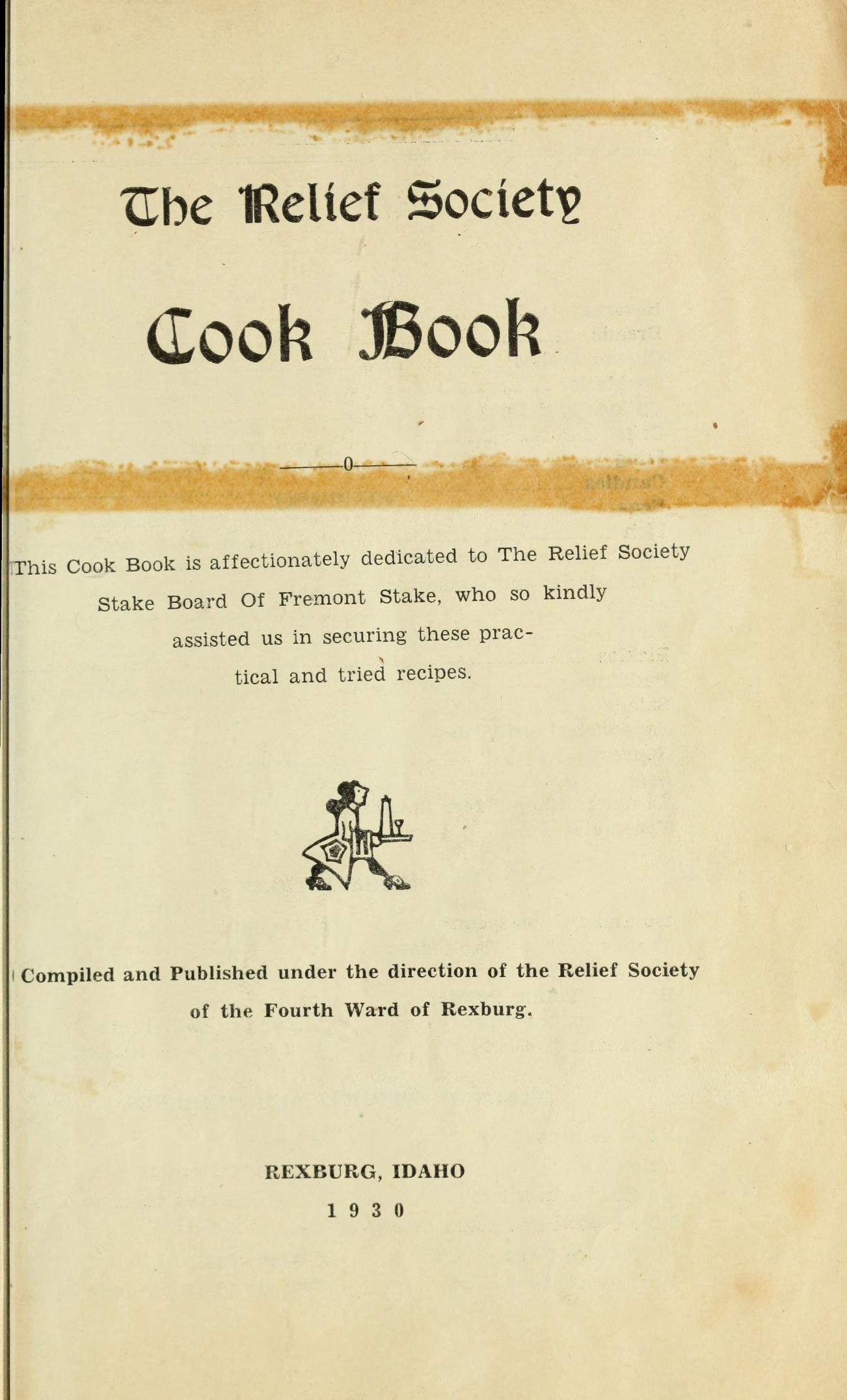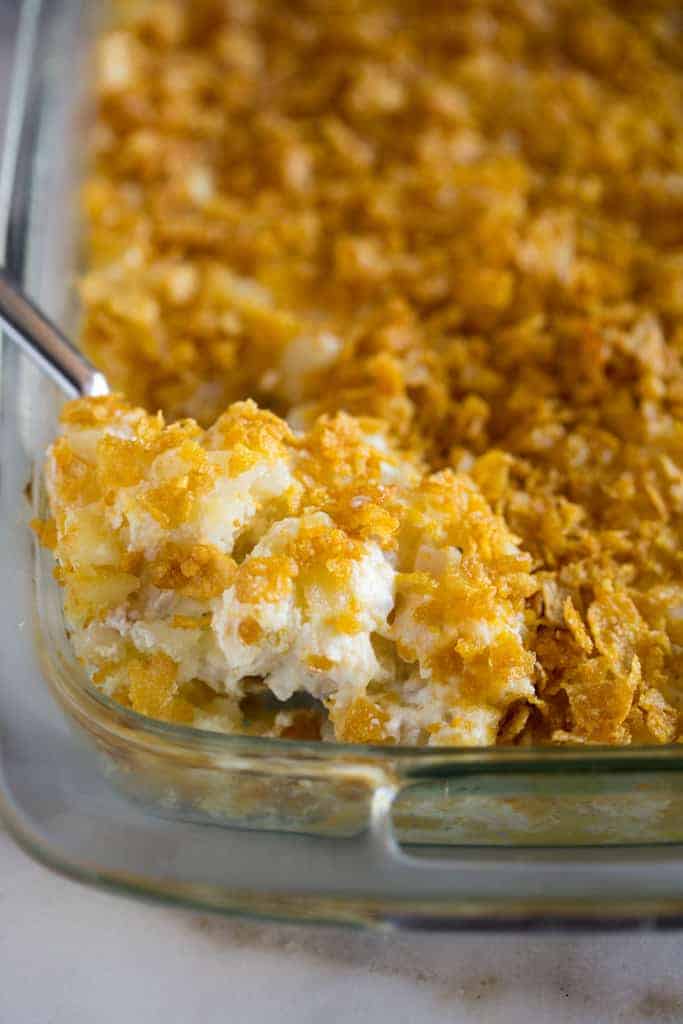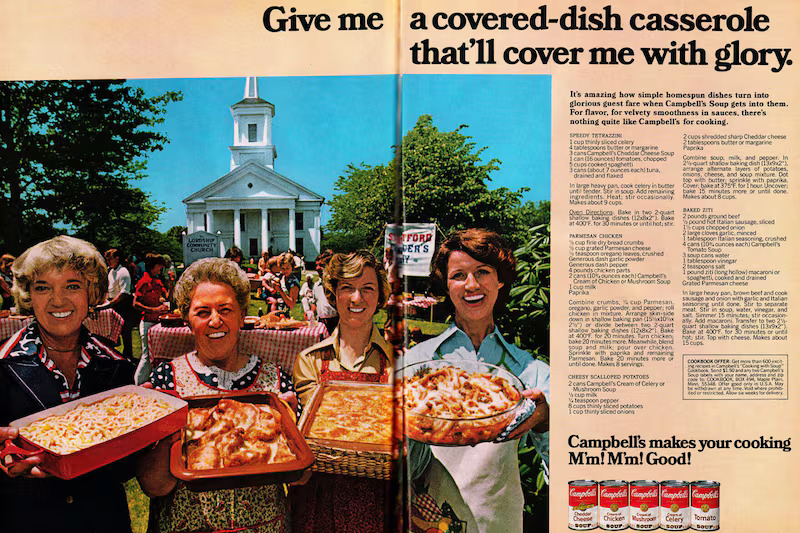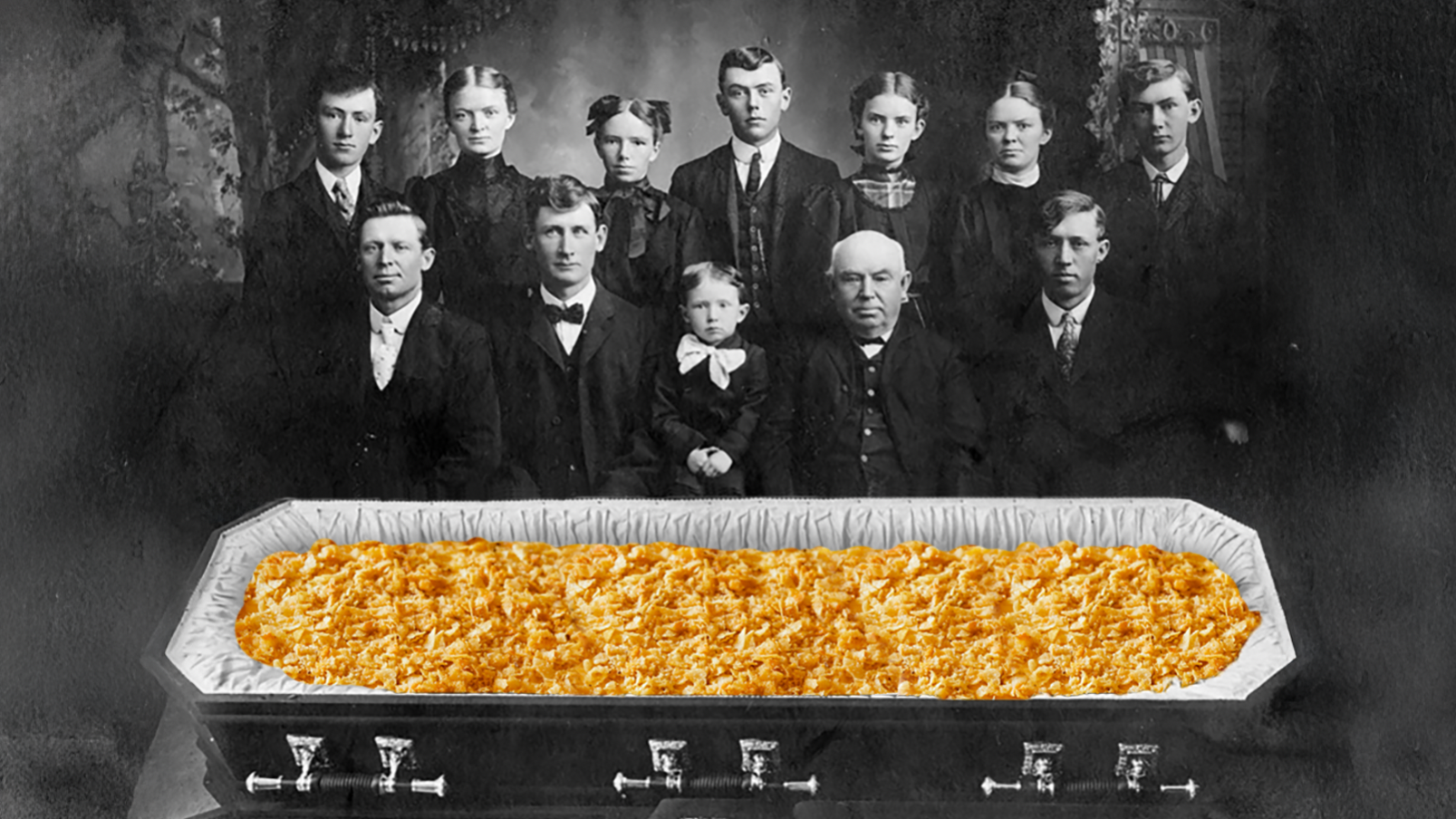Funeral Potatoes: you either love them or you politely push them to the edge of your plate, unsure why breakfast cereal is on your dinner. Critics have called them “disturbing,” but, for many Latter-day Saints, they’re as comforting as the post-church nap.
Buttery potatoes, canned cream of chicken soup, a few healthy handfuls of cheese, and all topped with cornflakes—how did this strange concoction come to be? The short answer: pioneer self-reliance, Relief Society service traditions, and the cultural blending that occurred in the Great Basin during the late 19th and early 20th centuries. The long answer: keep reading.
Pioneer Roots
When Brigham Young and the first pioneer company entered the Salt Lake Valley in July 1847, Utah was hundreds of miles from the nearest large-scale market economy. Imports—if they arrived at all—were expensive. Young urged the Saints to grow their own food, establish cooperative industries, and “henceforth to be a self-sustaining people."
Latter-day Saint immigrants brought food traditions from Britain, Scandinavia, the American Midwest, and the South. But the Wasatch Front’s high desert climate reshaped those recipes. Wheat and barley thrived, as did root vegetables, beans, and orchard fruits. Fish from Utah Lake, beef, and mutton supplemented the diet. Sugar, citrus, and spices remained rare treats until the completion of the transcontinental railroad in 1869 (though that came with its own problems).
The Sacred Potluck
By the late 19th century, Church wards, often spearheaded by the Relief Society, regularly organized food-centered social gatherings: harvest dinners, holiday suppers, and other food-centered activities. These events were often held in meetinghouses or community halls and were potluck-style, with each family contributing a dish.
Potluck cooking needed to be:
Affordable (many Saints were farmers or laborers)
Scalable (serving dozens without breaking the budget)
Flexible (recipes adapted to whatever ingredients were on hand)
This made casseroles—layered, baked dishes using starches, proteins, and a binding sauce—an ideal solution. Although casseroles had roots in European and American cooking that went back centuries, their Latter-day Saint popularity surged in the early 20th century when mass-produced baking dishes and later canned soups made preparation easier.
Relief Society Cookbooks: The Original Pinterest Boards

Before Pinterest boards and Instagram reels, there was the ward cookbook. Relief Societies collected recipes on index cards, typed them up, and bound them into spiral-backed volumes that sometimes doubled as ward directories. They were used as fundraisers (some included advertisements or sponsorships by local businesses), community-building projects, and trusted kitchen references, filled with practical, crowd-pleasing recipes passed down through families and refined through potlucks and busy weeknight dinners.
These were practical survival guides for big families and big gatherings. “Feeds 12” wasn’t a brag; it was the bare minimum. Cooking tips were passed along like family heirlooms, and everyone knew the “Sister Johnson potato rolls” recipe was gold.
Food Storage and Green Jell-O

In the 1930s and 1940s, Church leaders began formalizing counsel on maintaining a home food supply. In April 1936, the First Presidency launched the Church Security Plan (later renamed the Welfare Program) which established stake-level councils to encourage preparedness, including ensuring families had sufficient food and clothing stores. By 1937, leading figures like J. Reuben Clark were explicitly urging members to store a year’s supply of essentials such as flour, wheat, powdered milk, and canned goods. This concept was reinforced in general conference addresses and Church-published materials that promoted thrift, provident living, and self-reliance as spiritual virtues.
At the same time, “Green Jell-O salad” gained traction in Utah kitchens. Its appeal was practical: inexpensive, long shelf life, no refrigeration needed until set, and easily scalable with fruit, vegetables, or other mix-ins. By the 1990s, Utah was known as the nation’s top per-capita consumer of Jell-O. In 2001, the Utah Legislature officially declared it the state snack, even creating collectible green Jell-O pins for the 2002 Winter Olympics in Salt Lake City.
Soda Shops and the "Dirty Soda"
No Latter-day Saint food culture list is complete without Utah’s soda shop boom. Beginning in Utah early 2010s with businesses like Swig and Sodalicious, these drive-through drink stops quickly became a regional staple, specializing in oversized fountain sodas mixed with flavored syrups, cream, or fruit purées—often called “dirty sodas". A “Dirty Diet Coke,” for example, might come spiked with coconut syrup, lime, and a splash of cream. These establishments became popular partly due to the Church’s interpretation of the Word of Wisdom, which prohibits coffee, tea, and alcohol but not caffeinated soft drinks. The substitute isn’t just dietary, it’s cultural. As Church Historian Kate Holbrook observed, soda shops embody a kind of “fitting in and intentionally failing to fit in.” Just as people frequent bars for the social connection as much as the drinks, Utah’s soda shops provide a parallel gathering space for Latter-day Saints. A Dirty Dr. Pepper, laced with cream and raspberry syrup, captures that balance perfectly: a playful blend of mainstream American tastes and distinctive Latter-day Saint identity. It’s a frothy reminder of the belief in being “in the world, but not of the world.”
Funeral Potatoes: A Cultural Icon

Funeral Potatoes—a cheesy potato casserole usually topped with cornflakes or breadcrumbs—have been a mainstay of post-funeral luncheons in the Intermountain West for decades, particularly among Latter-day Saint congregations. While potato casseroles appeared in American cookbooks as early as the 1920s, versions resembling modern Funeral Potatoes, often labeled “Cheesy Potatoes” or “Potato Bake,” surfaced in Relief Society and ward cookbooks by the mid-20th century, boosted by the growing availability of frozen hash browns and condensed cream soups.

The dish's enduring link to funerals likely developed because it fits the moment perfectly: in true “mourn with those that mourn” fashion, Relief Society sisters could prepare funeral potatoes in bulk, keep them warm in a church kitchen, and serve them alongside ham and rolls to grieving families.
Today, Funeral Potatoes have become firmly embedded in Utah culture. They appear in state fair cook-offs, are highlighted in travel guides, and exist in countless recipe variations online, some even daring to add bacon, jalapeños, or gourmet cheeses.
The Final Bite
From pioneer gardens to Relief Society cookbooks, from Jell-O salads to soda shop drive-thrus, Latter-day Saint cuisine reflects the history of a faith adapting to its environment while holding onto shared values. Next time you dig into Funeral Potatoes—whether at a wedding, ward potluck, or yes, a funeral—remember: you’re not just chowing down on cheesy carbs. You’re seeing 175 years of cultural adaptation, culinary creativity, and the quiet work of community building, one comforting casserole at a time.
Like Mormonr? Sign up for our newsletter to receive updates on the latest blog posts, Q&As, and Mormonr projects.


